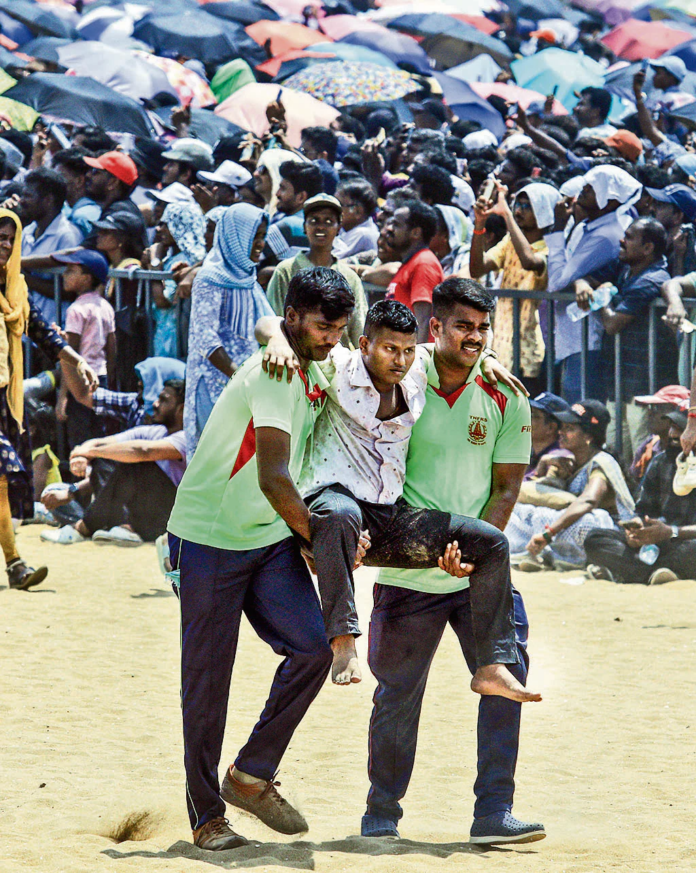A day that was meant to be a spectacular showcase of the Indian Air Force’s (IAF) might turned into a nightmare at the Chennai air show, where five lives were tragically lost, and many others were left traumatized. The chaos that unfolded after the event has left spectators shaken, with stories of panic, dehydration, and a stampede-like situation surfacing.
Among the eyewitnesses was Sangeetha Rajeesh, who vividly recounted the harrowing experience. Describing the scene, she said,
“Kids were crying, and parents were desperately putting them on walls and police cars to keep them safe.”
The heat and lack of proper facilities exacerbated the situation, with many people collapsing due to dehydration.
Stampede-like Situation and Dehydration Chaos
The Chennai air show, which took place on October 7, 2024, attracted thousands of eager spectators. However, what should have been an awe-inspiring display quickly spiraled out of control. Sangeetha recalled how the day took a tragic turn after the event ended. “There was no proper management once the show was over,” she said. A stampede-like situation emerged as the large crowd scrambled to exit the venue.
The heat added to the chaos. With temperatures soaring, dehydration became a serious problem. Sangeetha and other attendees reported that many people began collapsing as they waited in the scorching sun. Children were screaming and crying, unable to bear the unbearable conditions. Parents, in their desperation, resorted to lifting their kids onto walls and police cars to protect them from the crush of the crowd.
The situation was so disorganized that Sangeetha lost her own children in the commotion. “I lost my kids at 1:30 pm and didn’t find them until 4 pm,” she said, highlighting the panic that ensued as parents struggled to keep their families safe.
Failure in Crowd Management: A Deadly Oversight
One of the key takeaways from the tragic events at the Chennai air show is the apparent failure in crowd management. According to several witnesses, authorities were woefully unprepared to handle the large influx of people. The crowd, which included families with small children, was left to fend for themselves as the venue lacked adequate exits, and there was no visible plan to manage the overwhelming numbers.
The death toll has raised serious questions about the organizational competence of the event managers. As the bodies of the five victims were recovered, many are wondering if this tragedy could have been avoided with better pre-event planning and more effective crowd control measures.

Parents’ Desperation: Children Left Vulnerable in Chaos
Perhaps the most heart-wrenching part of the tragedy was the sheer helplessness felt by parents who attended the event. As dehydration set in and crowds grew unruly, children became the most vulnerable. Sangeetha’s account of losing her children for several hours paints a disturbing picture of the level of disarray at the venue.
Parents were seen lifting their children onto walls, barricades, and even police vehicles to protect them from the crush of the crowd. The lack of medical facilities on-site, combined with the absence of water stations, meant that young children were left exposed to extreme conditions without any relief.
Videos from the scene depict children wailing in distress while their parents frantically searched for help. What should have been a family-friendly event turned into a nightmarish struggle for safety and survival.
Lessons from Tragedy: Can We Prevent Future Incidents?
In the wake of this disaster, there are urgent questions that need answering. How could an event of this scale be allowed to descend into such disorder? Why were there not sufficient provisions for the basic needs of the attendees, such as hydration and crowd control?
The deaths of five innocent people are a sobering reminder that large public gatherings require meticulous planning, especially when families and young children are involved. Authorities and event organizers must be held accountable for the gross mismanagement that led to this tragedy.
Furthermore, the lack of emergency response raises concerns. Spectators who were present at the air show reported that medical assistance was scarce, and there were no clear instructions for how to handle the growing crisis. What should have been an opportunity for the Indian Air Force to showcase its power instead revealed glaring organizational flaws.

Looking Forward: Demands for Accountability
As the aftermath of the Chennai air show continues to unfold, the public is demanding answers. Sangeetha and other spectators are calling for an investigation into the lack of crowd control, the failure to provide basic amenities like water, and the inadequate medical facilities that could have potentially saved lives.
The Indian Air Force, which was responsible for the event, is also facing scrutiny. While their focus may have been on delivering a dazzling display, they appear to have overlooked the most critical element: the safety of the people in attendance.
The tragic deaths at the Chennai air show should serve as a wake-up call to organizers, authorities, and the public alike. Sangeetha’s words resonate: “It was chaos, pure chaos. This could have been avoided.” As more details emerge, it is crucial that we learn from this disaster to ensure that future events are better prepared to handle large crowds and prevent such tragedies from happening again.

